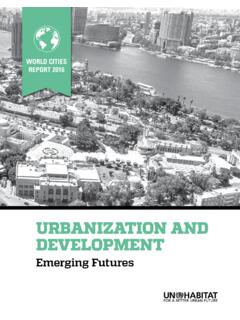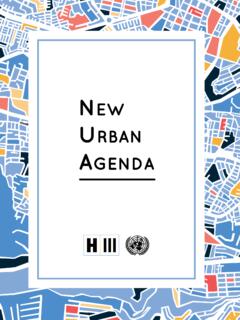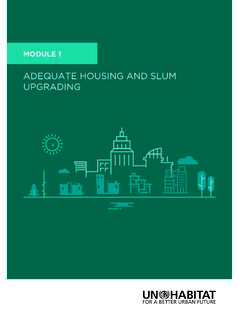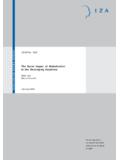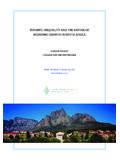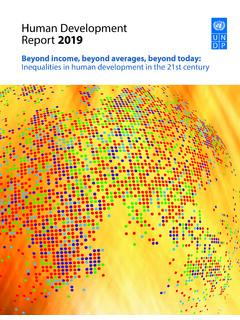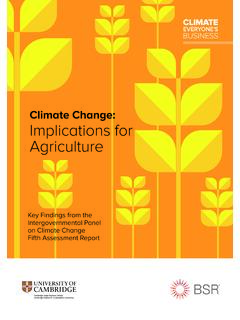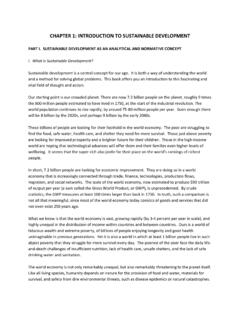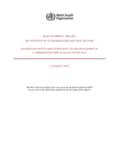Transcription of A new strAtegy of sustAinAble neighbourhood plAnning: five ...
1 A new strAtegy of sustAinAble neighbourhood plAnning: five principlesthe five principles Are:1. Adequate space for streets and an efficient street network. The street network should occupy at least 30 per cent of the land and at least 18 km of street length per km .2. high density. At least 15,000 people per km , that is 150 people/ha or 61 Mixed land-use. At least 40 per cent of floor space should be allocated for economic use in any social mix. The availability of houses in different price ranges and tenures in any given neighbourhood to accommodate different incomes; 20 to 50 per cent of the residential floor area should be for low cost housing; and each tenure type should be not more than 50 per cent of the limited land-use specialization.
2 This is to limit single function blocks or neighbourhoods; single function blocks should cover less than 10 per cent of any recent decades, the landscape of cities has changed significantly because of rapid urban population growth . A major feature of fast growing cities is urban sprawl, which drives the occupation of large areas of land and is usually accompanied by many serious problems including inefficient land use, high car dependency, low density and high segregation of uses. Coupled with land use speculation, current models of city growth result in fragmented and inefficient urban space where urban advantage and city concept are lost.
3 Cities of the future should build a different type of urban structure and space, where city life thrives and the most common problems of current urbanization are addressed. UN-Habitat proposes an approach that summarizes and refines existing sustAinAble urban planning theories to help build a new and sustAinAble relationship between urban dwellers and urban space, and to increase the value of urban land. This approach is based on 5 principles that support the 3 key features of sustAinAble neighbourhoods and cities: compact, integrated, supports countries to develop urban planning methods and systems to address current urbanization challenges such as population growth , urban sprawl, poverty , inequality , pollution, congestion, as well as urban biodiversity, urban mobility and density urban growth vs.
4 Urban sprawldiscussion note 3A compact city. Paris, France UN-Habitat/Laura Petrella Urban sprawl. Uberlandia, Brazil UN-Habitat/Alessandro ScottiURBAN PLANNINGURBAN PLANNING DISCUSSION NOTE 32objectives of the Five principlesIn supporting sustAinAble neighbourhoods, the Five Principles seek to:1. Promote high density urban growth , alleviate urban sprawl and maximize land Promote sustAinAble , diversified, socially equal and thriving communities in economically viable Encourage walkable neighbourhoods and reduce car Optimise use of land and provide an interconnected network of streets which facilitate safe, efficient and pleasant walking, cycling and driving.
5 (1)5. Foster local employment, local production and local consumption. 6. Provide a variety of lot sizes and housing types to cater for the diverse housing needs of the community, at densities which can ultimately support the provision of local services.(2)Key features of sustAinAble neighbourhoodsThe Five Principles promoted by UN-Habitat are meant to foster sustAinAble urban development by creating livable and efficient neighbourhoods. sustAinAble cities are prosperous, convenient, livable, and safe. A sustAinAble city would possess the following key features, which the Five Principles contribute to:1.
6 A vibrant street life: Supporting and promoting street life by enabling a variety of activities, conducive frontage and street width, and reducing the presence and role of private transport. The Five Principles encourage high density and mixed land use which boost a lively street life. A high population density generates sufficient industrial and commercial service demand while mixed land use provides adequate manufacturing and service space. Cities consistent with the Five Principles are able to link demand with supply and thus stimulate a prosperous city street life which satisfies people s material and spiritual needs and creates a safe and vibrant city life.
7 This is a key feature of sustAinAble cities. 2. walkability: Promoting walkability as a key measure to bring people into the public space, reduce congestion and boost local economy and interactions . A vibrant street life encourages people to walk or cycle around, while a rational street network enables necessary city administrative services to be offered within walking or cycling distance and ensures security. High density, mixed land use and a social mix make proximity to work, home and services possible.
8 Walkability helps to reduce automobile reliance and thus alleviate relevant congestion, air pollution and resource depletion issues. It is healthier to walk more and drive less ! Pedestrians add an incredible amount of vibrancy to city affordability: Supporting affordability of transactions and economic activities, as well as of services and housing, by promoting proximity and reducing costs and building services for a diverse group of users. Proximity, brought about by applying the Five Principles, helps to reduce wastage of time and resources and thus brings down general service costs.
9 Furthermore, the social mix principle tries to promote a rational distribution of urban public resources and provides adequate housing for different revenue groups through city planning regulations - ensuring social equity and promoting economic efficiency. An affordable and accommodating city is a core feature of a sustAinAble street, Beijing, China UN-Habitat/Jimin ZhengBute Street, Vancouver, Canada UN-Habitat/Shan ZhengFive Principles of sustAinAble neighbourhood Planning3principle 1adequate space for streets and an efficient street networkthe street network should encompass at least 30 per cent of the land with at least 18 km of street length per square 1 aims to develop an adequate level of street network that not only works for vehicles and public transport but also specifically aims to attract pedestrians and cyclists.
10 (3) It will include a street hierarchy with arterial routes and local streets based on traffic speed differences. The street network will also shape the urban structure which, in turn, sets the pattern of development blocks, streets, buildings, open spaces and landscape.(4) Principle 1 provides the material basis for sustAinAble urban design the street network in a high density city, the amount of land needed for roads and parking needs to be determined. According to research on urban impervious surface coverage (Figure 1), complex functions and high population density require high street coverage.

